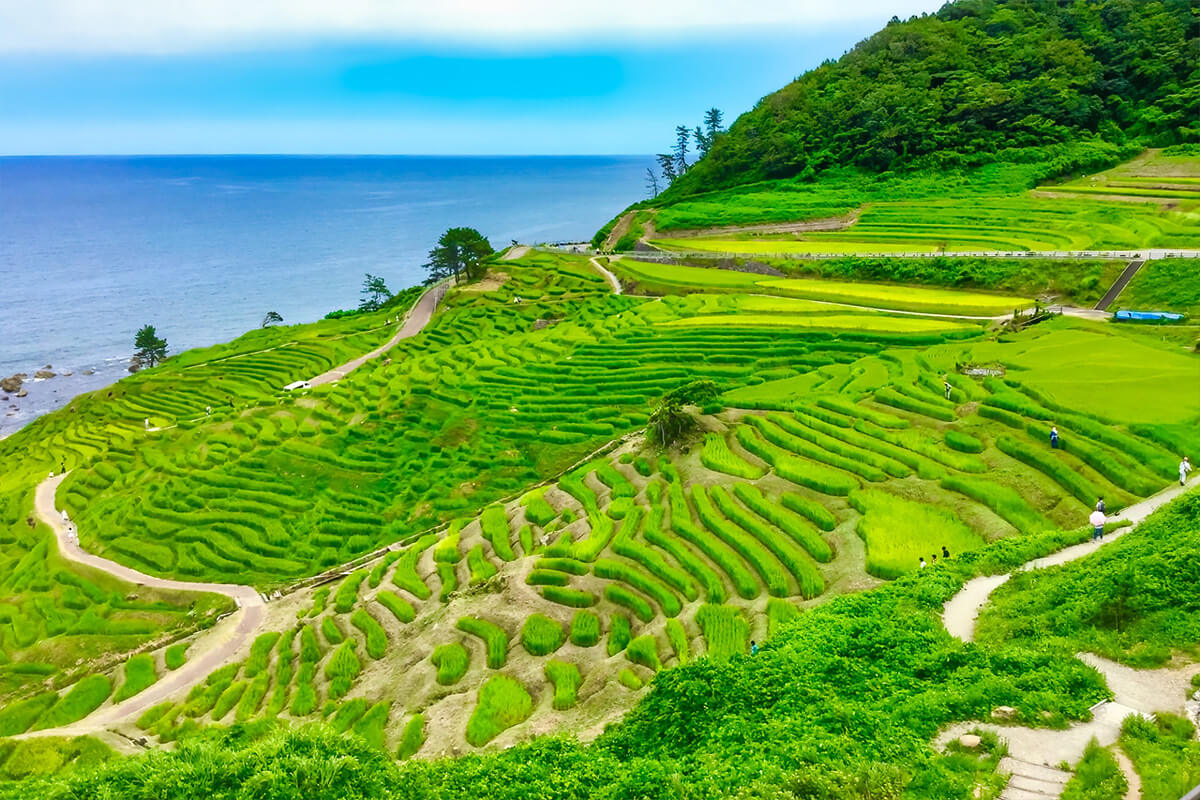
Following on from the previous article, we will continue to write about problems in the internationalisation of Japanese agriculture.
Japan has by far the lowest domestic food self-sufficiency rate compared to other developed countries. Looking at the history of Japan, agriculture was originally the main industry of the country, with light industry as a supporting industry. The so-called rice-based system, based on rice as the staple food of the Japanese people, was the basis of the economy. In particular, the Tokugawa Shogunate during the Edo period (1603-1867) implemented a thorough rice-oriented system as the financial basis of the bakuhan system (ishitaka system). Under the system, everything from the size of the clan to the salaries of the warriors was expressed in terms of rice production capacity, on the basis of which tribute was levied. The lords and feudal lords made a living by selling rice, excluding rice for their own consumption, and using the proceeds to purchase all kinds of goods.
In the middle of the Edo period, the rice-based system reached its limits and a monetary economy was put in place, but it was not until the end of the Edo period, the opening of the country from isolation and the start of the Meiji period that agriculture in Japan underwent a major transformation. Selling goods from the cheapest to the most expensive place is the way of the world. It was during this period that goods that could not be sold and those with low productivity were cut down, and the rate of price increases rose dramatically.
However, considering the current situation today, it can be said that the future of agriculture in Japan is even more difficult than in the Meiji Era, and it is now even more difficult to operate a Japanese farm.
The future of Japanese agriculture lies in successfully lifting off the waves of internationalisation, but unlike 150 years ago, the development of transport and communication networks and the worsening situation in Japan are hampering this.
Translated with DeepL.com (free version)
1. decline of rural areas
With the decline of agriculture, rural areas are also declining. Population decline in rural areas and the closure of shops are problems. The decline of rural areas can be attributed to the following factors
Declining agricultural workforce: the population of rural areas is declining due to a decrease in the number of agricultural workers
Low profitability of agriculture: young people are leaving rural areas due to the low profitability of agriculture.
Delayed development of public facilities: public facilities such as public transport and medical facilities are delayed in rural areas.
Measures and prospects
Revitalisation of rural areas: measures to revitalise rural areas need to be promoted to solve problems such as population decline and shop closures. Specific measures include the promotion of new farmers and support for processing and marketing of agricultural products.
Development of public facilities: the need to promote the development of public facilities in rural areas and improve the living environment.
Use of information and communication technology: there is a need to use information and communication technology to solve problems in rural areas. Specific examples include online medical treatment and support for online shopping.
2. the effects of climate change
In recent years, the effects of climate change, such as global warming, have resulted in frequent extreme weather events. Extreme weather events have caused damage to crops and put pressure on agricultural operations.
Measures and prospects
Climate change measures: climate change measures need to be promoted to mitigate the effects of extreme weather events. Specifically, reducing greenhouse gas emissions and improving flood control and drainage projects.
Development of heat- and cold-tolerant varieties: the need to develop heat- and cold-tolerant crop varieties and aim for agricultural operations that can adapt to the effects of climate change.
Use of agricultural insurance: use of agricultural insurance to compensate for damage caused by extreme weather events.
3. changing international situation
The international situation has changed in recent years, with increasing trade friction and geopolitical risks. Changes in the international situation may affect Japan’s agricultural exports.
Measures and prospects
Diversification: need to diversify export destinations and reduce dependence on specific markets
Risk management: stabilise business development in foreign markets by managing risks such as foreign exchange and political risks
Government support: the government has enhanced support measures to promote exports of agricultural products.
The internationalisation of Japanese agriculture faces a number of challenges, but it is important for farmers to collect information and study the international situation themselves, rather than relying solely on the government and local authorities, as this will bear fruit and eventually lead to the development of an internationally competitive agriculture.







